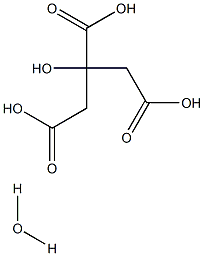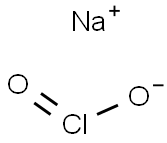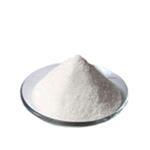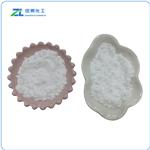Chemical Properties
Citric acid monohydrate occurs as colorless or translucent crystals or as a white crystalline, efflorescent powder. It is odorless and has a strong acidic taste. The crystal structure is orthorhombic. monohydrate crystals lose water of crystallization in dry air or when heated to about 40 to 50℃. Citric acid monohydrate softens at 75℃ and melts at approximately 100℃. It serves as a natural preservative and is commonly utilized to contribute an acidic or sour taste to foods and soft drinks.
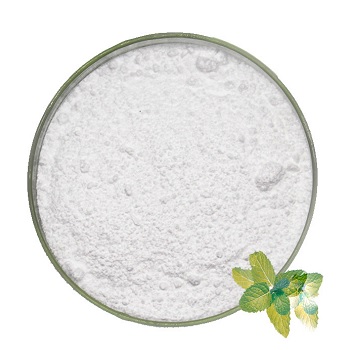
Citric acid monohydrate acts as a preservative and antioxidant. It is also used as an acidulant, flavoring agent and antistaling agent in fruit drinks, candy, cookies, biscuits, canned fruits, jams, and jellies. It differs from other forms of citric acid by having a moisture percentage ranging from 7.5-9.0.
Uses
Citric Acid Monohydrate is a tricarboxylic acid found in citrus fruits. Citric acid is used as an excipient in pharmaceutical preparations due to its antioxidant properties. It maintains the stability of active ingredients and is used as a preservative. It is also used as an acidulant to control pH and acts as an anticoagulant by chelating calcium in the blood. Additionally, Citric Acid Monohydrate is used as an acidulating, food additive, and synergist in antioxidant mixtures.
Application
Citric acid monohydrate has multiple applications. It is used for preparing citrate buffer in platelets for intravital microscopy and as a buffer component for unmasking antigens and epitopes. Additionally, it functions as a pH-control agent in food, beverage, and pharmaceutical industries. In animals, it enhances the efficiency of nutritional calcium utilization.
Recent uses of citric acid monohydrate include:
As a carbon source in carbon nanodot synthesis
To prepare a pH-6.0 citric acid monohydrate solution/buffer for tissue sample preparation
In citric acid solubilization technique to treat various samples.
Production Methods
Citric acid occurs naturally in a number of plant species and may be
extracted from lemon juice, which contains 5–8% citric acid, or
pineapple waste. Anhydrous citric acid may also be produced
industrially by mycological fermentation of crude sugar solutions
such as molasses, using strains of Aspergillus niger . Citric acid is
purified by recrystallization; the anhydrous form is obtained from a
hot concentrated aqueous solution and the monohydrate from a
cold concentrated aqueous solution.
Preparation
Currently, the industrial production process for citric acid monohydrate crystals involves several steps. First, the citric acid fermentation liquid is separated from the solid-liquid to obtain a citric acid clear liquid. Then, the clear liquid undergoes purification via the calcium salt method (hydrogen calcium method), acidolysis, and decolorization. This purified solution is then heated, concentrated, and crystallized to produce anhydrous citric acid. The mother liquor remaining from this process is then filtered by plate and frame and added to a crystallization cylinder to reach a supersaturated state through cooling and precipitating the crystal. Once the temperature reaches around 13 ℃, the mixture undergoes centrifugal separation, and the resulting wet crystal is then dried in a dryer. The separated mother liquor, after being filtered, decolorized, and concentrated, is added back to the crystallization cylinder to repeat the above steps a total of four to five times. Finally, the mother liquor is returned to the extraction workshop for re-purification via chromatographic separation.
Definition
ChEBI: Citric acid monohydrate is an organic molecular entity.
Definition
Citric acid and citric acid monohydrate are different. Citric Acid can be obtained as an anhydrous (water- free) form or as a monohydrate. The anhydrous form crystallizes from hot water, while the monohydrate forms when citric acid is crystallized from cold water. The monohydrate can be converted to the anhydrous form at about 78 °C.
General Description
Citric acid monohydrate is an organic acid. Its molar enthalpy of solution in water has been reported to be
ΔsolHm (298.15K,
m = 0.0203molkg
-1) = (29061 ± 123)Jmol
-1
Biochem/physiol Actions
Citric acid plays a major role in textile, food, pharmaceutical, metal and chemical industries. Melting citric acid monohydrate can give rise to itaconic anhydride. The crystals of citric acid monohydrate has the ability to preserve water up to 56 degree celsius.
Safety
Citric acid monohydrate is non-toxic and has a low reactivity.
May cause gastrointestinal irritation with nausea, vomiting and diarrhea. Excessive intake of citric acid may cause erosion of the teeth. Inhalation: Causes respiratory tract irritation. Chronic: Repeated exposure may cause erosion of teeth.
storage
Citric acid monohydrate loses water of crystallization in dry air or
when heated to about 408℃. It is slightly deliquescent in moist air.
Dilute aqueous solutions of citric acid may ferment on standing.
Purification Methods
Crystallise it from hot H2O solution (w/w solubility is 54% at 10o, 71% at 50o and 84% at 100o. The monohydrate (softens at ~75o and melts at ~100o) dehydrates in air or when heated gently above 40o . The triethylester ( M 276.3, b 127o/1mm, 294o/atm, d 4 1.137, n D 1.4420.) is a bitter tasting oil. [Beilstein 3 H 556 and 568, 3 IV 1272.]
Incompatibilities
Citric acid is incompatible with potassium tartrate, alkali and
alkaline earth carbonates and bicarbonates, acetates, and sulfides.
Incompatibilities also include oxidizing agents, bases, reducing
agents, and nitrates. It is potentially explosive in combination with
metal nitrates. On storage, sucrose may crystallize from syrups in
the presence of citric acid.
Regulatory Status
GRAS listed. The anhydrous form is accepted for use as a food
additive in Europe. Included in the FDA Inactive Ingredients
Database (inhalations; IM, IV, and other injections; ophthalmic
preparations; oral capsules, solutions, suspensions and tablets;
topical and vaginal preparations). Included in nonparenteral and
parenteral medicines licensed in Japan and the UK. Included in the
Canadian List of Acceptable Non-medicinal Ingredients.
